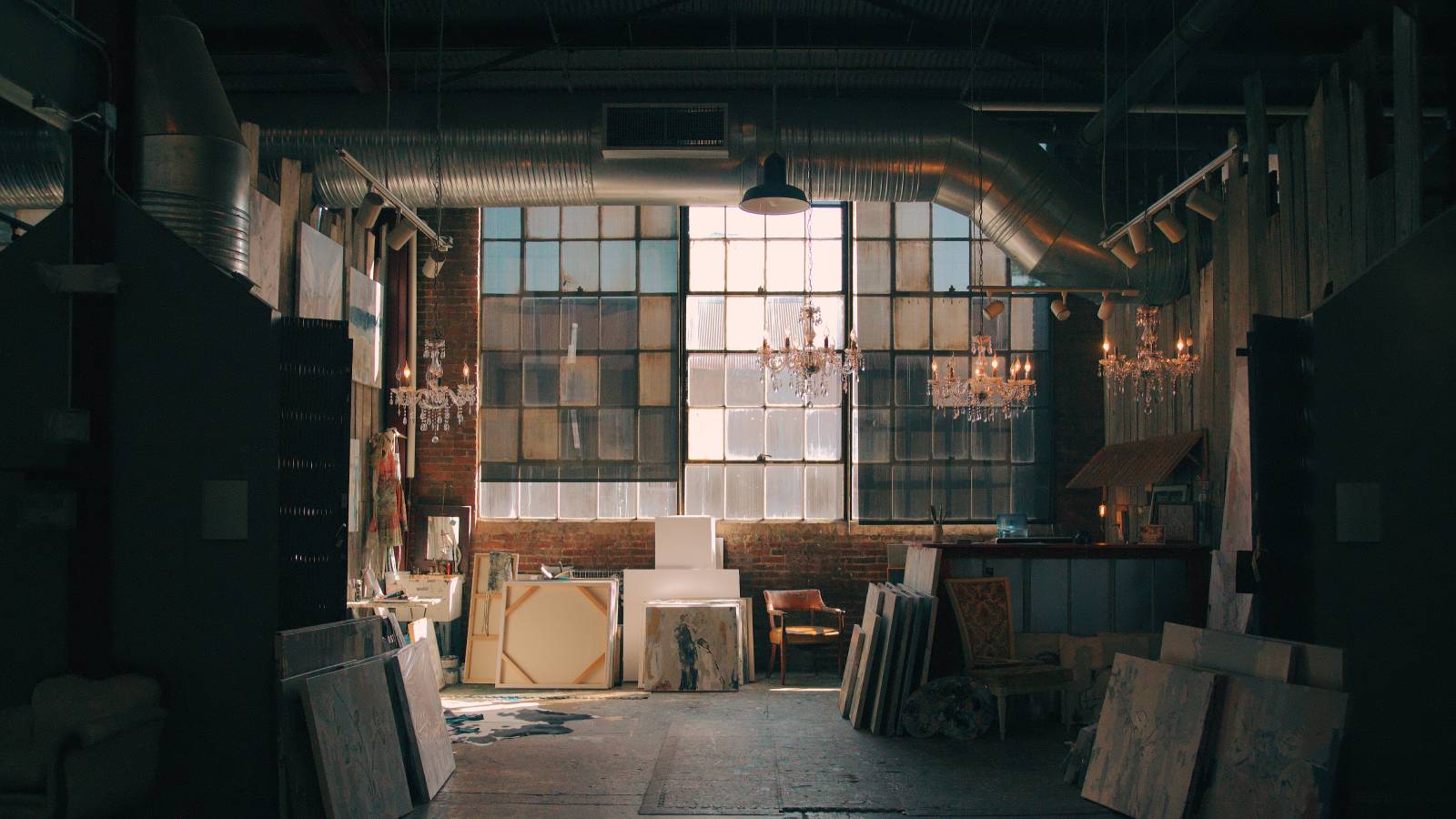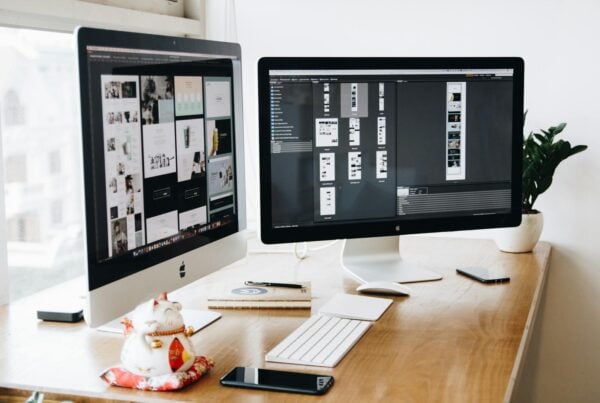There’s nothing quite like having your own dedicated space for creating art. Whether you’re a seasoned professional artist or a beginner just dipping your toes into the waters of creativity, an art studio or creative space can make a significant difference in your artistic journey.
In this guide, we’ll provide a comprehensive walkthrough of how to set up your own art studio or creative space. We’ll delve into the elements you need to consider, from choosing the right location to organising your supplies.
Check out our handy lesson plans for art studios:
Table of Contents
1. Choose Your Space
The first step in setting up your art studio is selecting the right space. This will largely depend on your available options, the type of art you create, and your personal preferences.
- Available Space: You may have a whole room to dedicate to your art, or perhaps just a corner of a room. Whatever space you have available, make it yours. Even a small space can be transformed into a creative haven with a bit of planning and organisation.
- Type of Art: Your art form will play a role in the space you need. If you’re a painter, you might require ample natural light. Sculptors might need more robust flooring, while digital artists need a quiet space for concentration.
- Personal Preferences: Some artists thrive in a cluttered environment, while others need a minimalist, distraction-free space. Your art studio should reflect your personal style and work habits.
2. Plan Your Layout
Before you start moving in your art supplies, it’s crucial to plan your studio layout. The goal is to create a flow that enhances your creative process, not hinder it.
- Work Zone: This is the area where you’ll be creating your art. Make sure it has enough space for your work table or easel, as well as room to move around comfortably.
- Storage Zone: Organise your art supplies in a way that they’re easy to find but not in your way. Shelves, drawers, and storage boxes can all be utilised for this purpose.
- Display Zone: This area is for showcasing your finished work or pieces in progress. It might include wall space, a gallery rail, or shelves.
- Inspiration Zone: A space dedicated to inspiring your creativity. This could be a mood board, bookshelf, or an area where you display art that inspires you.
3. Invest in Quality Furniture
Good furniture is crucial for a functional art studio. It doesn’t have to be expensive, but it does need to serve your needs effectively.
- Work Table or Easel: Depending on your art form, you’ll need a sturdy work table or easel. Make sure it’s at a comfortable height to avoid back or neck strain.
- Chair: A comfortable chair is a must if you’re sitting for long periods. Look for one with good back support and adjustable height.
- Storage Furniture: Invest in quality shelves, drawers, or boxes to store your art supplies. This will help keep your workspace organised and clutter-free.
4. Set Up Good Lighting
Lighting plays a significant role in how you perceive colours and details in your work. Consider a combination of natural and artificial light.
- Natural Light: If possible, set up your work zone near a window to take advantage of natural light. However, remember that direct sunlight can be harsh and affect your work, so use blinds or curtains to control it.
- Artificial Light: For times when natural light isn’t available, you’ll need good artificial lighting. Look for bulbs that offer daylight equivalent light. Consider adjustable lamps that you can move around to focus light where you need it.
5. Organise Your Art Supplies
A well-organised studio saves time and frustration. Develop a system that works for you and stick to it.
- Sort by Type: Group like items together. All paints in one place, brushes in another, etc.
- Frequency of Use: Items that you use frequently should be easily accessible. Store less frequently used items out of the way.
- Label Everything: Clear labelling can save you a lot of time. This is particularly helpful for items stored in boxes or drawers.
6. Personalise Your Space
Your studio should be a place where you feel comfortable and inspired.
- Inspiration Board: Create a board to display images, quotes, or anything else that inspires you.
- Colour Scheme: The colour of your studio can impact your mood and creativity. Choose colours that you find motivating and calming.
- Plants: If you like, incorporate plants into your studio. They not only improve air quality but can also boost mood and creativity.
In addition, you can also personalise your studio design by combining light and color. You can design custom neon signs by adding your own creative touch to your studio logo or name. Hanging it in your studio will not only enhance the ambience but also add some personality to your art studio.
7. Maintain Your Studio
Once you’ve set up your studio, regular maintenance will keep it a pleasant and productive place to work.
- Clean Regularly: Set aside time each week to clean your studio. This includes cleaning your tools, dusting, and vacuuming.
- Keep Organised: Put items back in their place after using them. It’s easy for a studio to become cluttered if you’re not vigilant.
- Regularly Review: Your needs may change over time. Regularly review your studio setup and make changes as needed.
Other Handy Art Studio Setup Tips
While we’ve covered the essentials, there’s more to creating an optimal art studio. Personal touches, material organisation, and mindfulness towards your unique workflow can elevate your creative space. Check out our additional tips below for further insights.
- Determine the kind of space you need: Artists need space to plan, make, show, sell, and store their art. The kind of space you need depends on the type of art you intend to do.
- Set your budget and define your priorities: Setting a budget for the initial setup and ongoing expenses is essential. This budget should include expenses related to the studio lease, moving fees, furnishings, decorating, rent, utilities, and supplies. If the budget is tight, consider sharing the space with other artists.
- Consider what is vital for your art: Most artists look for studios with big windows, lots of natural light, and good ventilation. Good lighting (both natural and artificial) and access to power for art tools are also important. You may also need to modify the space to suit your needs, and the studio should allow this.
- Choose the right location: Your studio should be in a location that is easy for you to commute to and should be in a safe and accessible area. Proximity to your suppliers also plays a significant role.
- Keep safety in mind: Building and studio safety is crucial, especially if you have expensive equipment. Ensure the space has all proper city permits, fire escapes, fire sprinklers, and consider getting insurance.
- Noise levels matter: Consider the noise levels in and around your studio. Your studio should be in a place where the noise you make is tolerated and there is no noise that can affect your concentration.
- Insulation and ventilation: If you’re working with odorous materials, proper ventilation is essential. Some old buildings have poor insulation and no air conditioning, so consider if a fan or space heater will be necessary and safe to use.
- Understand leases and get to know your property manager: Understand your legal responsibilities and rights as a tenant. Having a lawyer review the lease is advisable. Signing at least a one-year lease can provide stability and a chance to focus on your studio practice.
In conclusion, setting up an art studio or creative space is a deeply personal and exciting process. It’s about creating an environment that stimulates your creativity and makes you feel comfortable and productive. Remember, there are no hard and fast rules – the most important thing is that your space works for you. Happy creating!








